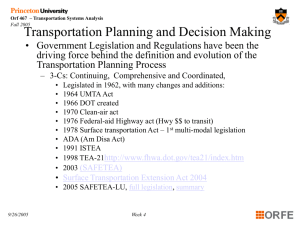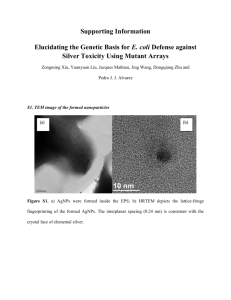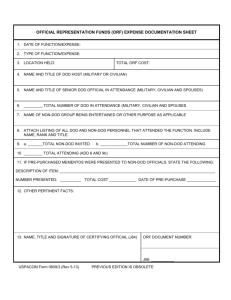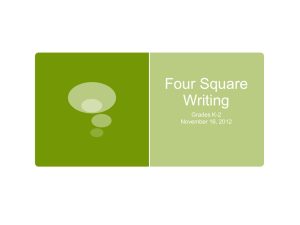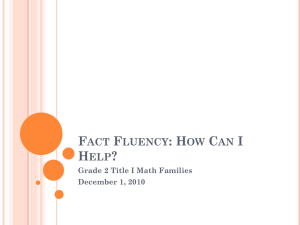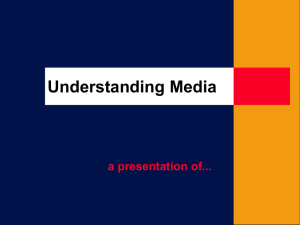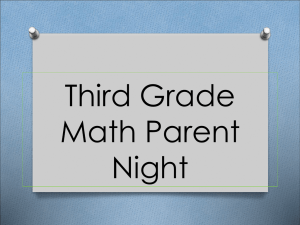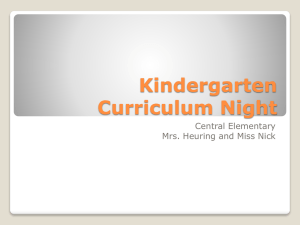Fluency Assessment - Chapter 9 Bill Cairns
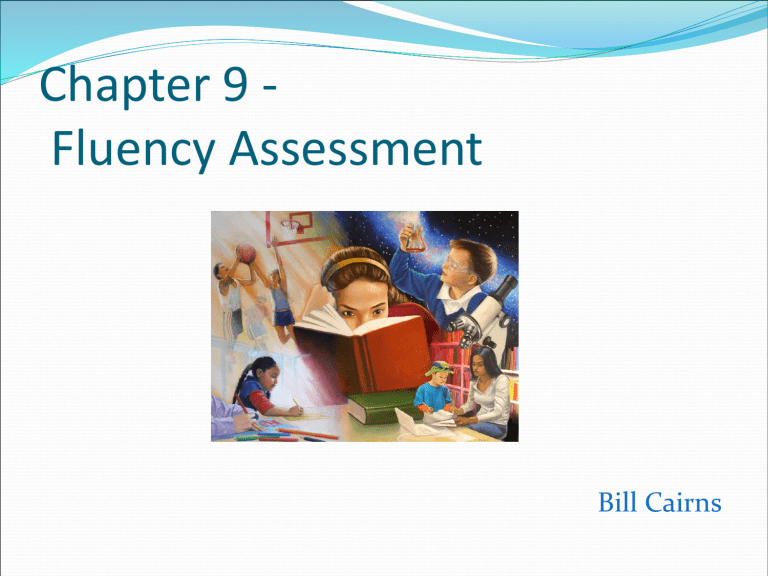
Chapter 9 -
Fluency Assessment
Bill Cairns
“Because reading is so critical to success in and out of school and because many students struggle with fluent reading, fluency should be assed often. Effective fluency assessment provide information that will guide instruction and improve student outcomes”
(Hosp, Hosp, and Howell 2007)
Fluency Assessments consists of:
1.
2.
Listening to students read aloud
Collecting information on oral reading accuracy, rate, and prosody.
Hints to successful reading fluency assessment
•
•
•
•
Provide reliable and consistent scores, regardless who administers the assessment.
Should provide valid, meaningful data for making instructional decisions.
Assessment should be efficient in administration, scoring, and interpretation.
“Should be quick and easy to use as possible, or teachers may not find time do use them” (Tim
Rasinski, 2004)
Oral Reading Fluency (ORF)
Curriculum-based measurement (CBM) is the most commonly used assessment tool for measuring ORF.
ORF is a good predicator of future reading performance.
Value of Oral Reading Fluency-
Curriculum-Based Measurement
Identify students at risk of reading failure.
Identify students not making adequate progress with the current given instructions.
Identify student’s instructional level
Indentify students who need additional diagnostic evaluation.
Conducting an ORF CBM
Assessment
Listen for one (1) minute as a student reads aloud from an unpracticed, grade level passage.
Count words read during the one minute (Rate)
Count the number of errors the student made
(Accuracy)
ORF is expressed as Words Correct Per Minute
(WCPM)
ORF Score = (total words read – errors)
Example: 84 words – 2 errors = 82 WCPM
Other ORF
Research suggests the Maze CBM for grades 4 and above is a more reliable predicator of future reading performance.
(Hosp et al. 2007)
Prosodic Reading measures the expressiveness of a students oral speech.
Maze Curriculum-Based
Measurement Sample
Student reads silently a passage and about every seventh word, they choose from a possible three (3) words, the word that best fits in the sentence.
This assessment is done independently and administered for two minutes.
Assessment of Prosodic Reading
Teacher listens and assesses the student’s oral reading, and then compares it to a National assessment.
Assessment focus is on stress, phrasing, intonation expression, and pauses
The Prosody Assessment Rating Scale can be found on
Page 334.
Prosodic Reading Key
Vocabulary
Stress - How student emphasize various words.
Phrasing - Length of pauses between phrases.
Intonation - How student uses end-mark punctuation to guide their voice expression.
Expression - Does their vocal tone accurately represent character’s mental state?
Pauses - Does student pause for punctuations; commas and end marks.
Setting Expectations using ORF
ORF norms and weekly rates are good standards to use in comparing students’ performance and measuring progress.
Establishing Individual Weekly Growth Rates for students can allow parents, teachers, and students to have a common focus for success and improvement.
Identifying Students at Risk
Charting students goals and progress provides teachers data to evaluate if the instruction the student is receiving is sufficient or if it needs to be adjusted.
How do I determine if the student is a Dysfluent
Reader?
Diagnosis of Dysfluent Reading
Dysfluent Reading is when a student is below expected level of reading or not making sufficient progress .
Students deemed a Dysfluent Reader will require that more data be collected.
Common causes of a Dysfluent Reader are: phonemic awareness, decoding, vocabulary language syntax, and content knowledge.
See Possible Causes of Dysfluency chart on Page 335.
Key Vocabulary
Phonemic Awareness – the ability to detect, identify, and manipulate phonemes in spoken words
Decoding –converting a word from print to speech
Vocabulary Language Syntax – correctly understanding the placement and context of the vocabulary terms used
Content Knowledge – having enough background knowledge to understand the text being read
Summary
Assessing students Oral Reading Fluency provides valuable data to support teachers in their instructional decisions.
Oral Reading Fluency assessments should be made frequently and charted to give maximum support to teachers and students.
Listen to students read aloud and determine ORF score.
Focus on and chart student progress in the following areas: Rate, Accuracy, Prosody.
Modify instruction as needed to increase student success.
